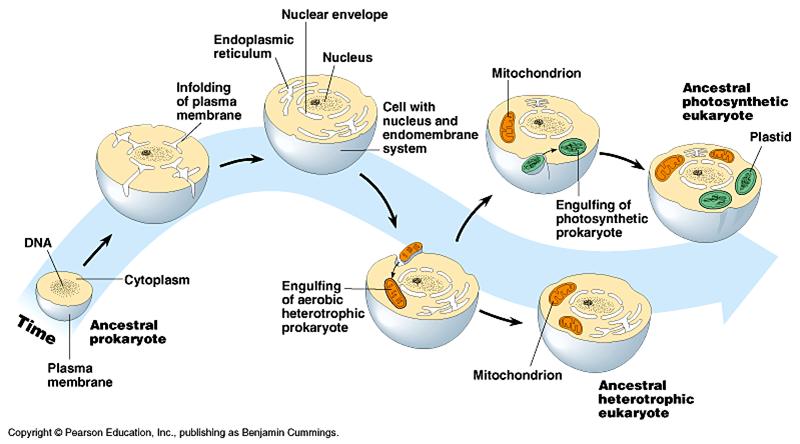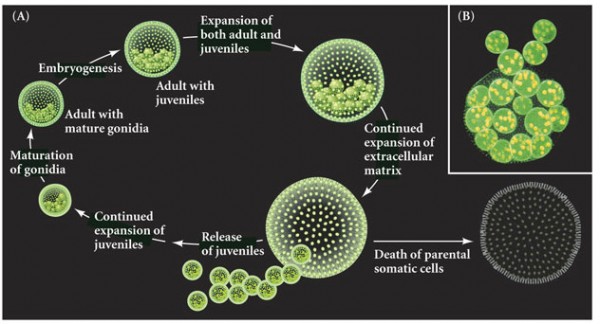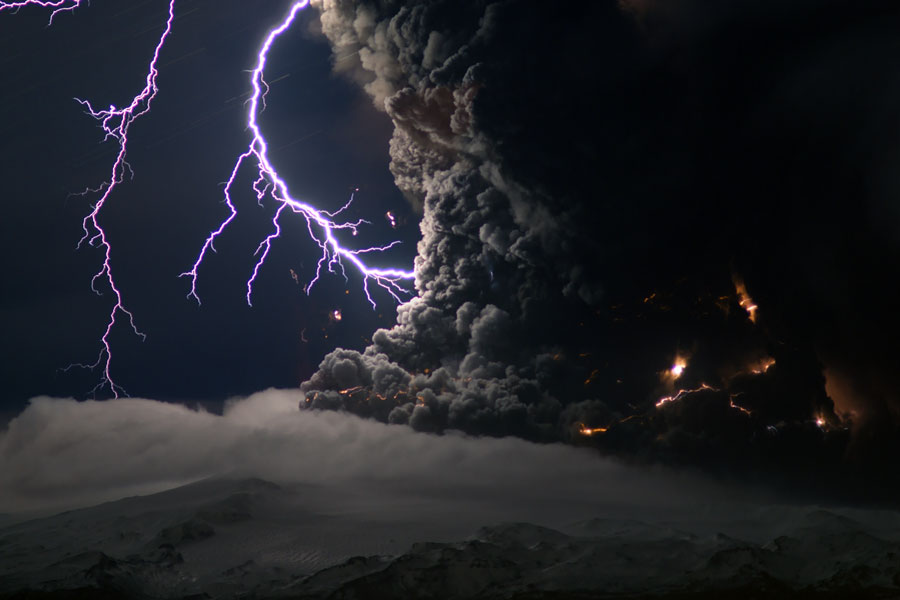In the process leading up to multicellular organisms, eukaryotic cells had to form. A suggested mechanism is below. It is thought that a progenitor cell may have got larger than other cells. To maintain SA:vol ratios it folded its membranes, some of which then enclosed the DNA (forming a nucleus) and the endoplasmic reticulum and Golgi apparatus.

From here we move into something called endosymbiosis (endocytosis - to engulf something, often for nutrients, symbiosis - a long term interaction between 2 things, often to the point where one can survive without the other).
It is thought that the progenitor cell engulfed a heterotrophic bacteria and over time it degenerated into a mitochondria. These cells were to become heterotrophic eukaryotes. One of these also engulfed a photosynthetic prokaryote. This photosynthetic prokaryote degenerated into a chloroplast and the entire cell was the ancestral plant cell.
Evidence to support this idea includes:
- The fact that mitochondria and chloroplast divide independently of each other
- The DNA of mitochondria and chloroplasts is circular (like bacteria) and has many common bacterial sequences
A link to describe the process in more detail is here.
Now that we have cells that are structurally similar to modern ones the next step is to get them to work cooperatively. The levels of cooperation were thought to be
One example is colonial algae, Volvox. It is broken into 2 cell types; cells for swimming (outer shell) and ones for reproduction (small green spheres)

In the case of the Portuguese Man O War (bluebottles)there are a number of additional cell types which are working cooperatively to assist the survival or the organism. Just to clarify the labelling here, the Gonozooids (reproductive structures) are the light blue ones near the polyp while the Gastrozooids are the red/brown ones just below.

From here it is possible to see further increases in cooperation between cells, and therefore increasing complexity of the organisms that possess them.






